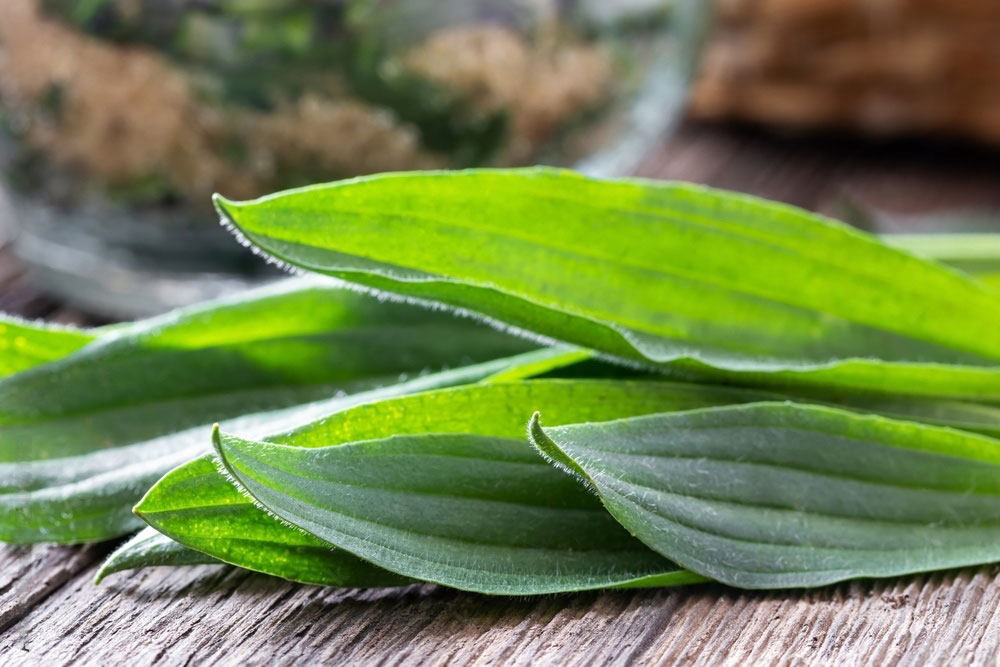The Humble Plantain: A Resilient Remedy and Salad Surprise at Your Feet
While strolling through the verdant meadows or along the winding paths of Marblehill, you might tread upon a tiny titan of the plant world – the ribwort plantain (Plantago lanceolata). Often overlooked as a common weed, the ribwort plantain boasts a surprising history as a natural remedy and offers hidden benefits waiting to be discovered, including a delightful addition to your next salad.
A Resilient Rosette: Identifying the Ribwort Plantain
The ribwort plantain is a master of disguise, easily blending into its surroundings. Keep an eye out for a low-growing rosette of leaves hugging the ground. These leaves are the plantain’s most distinctive feature – long and slender with prominent veins running vertically, resembling miniature swords. In early summer, a slender stalk shoots up, topped with a short, dense cluster of tiny white flowers. Later in the season, these flowers give way to brownish seed heads, ensuring the plantain’s continued presence.
From Battlefield Bandage to Backyard Boon: A Legacy of Healing
The ribwort plantain’s reputation as a natural healer stretches back centuries. Soldiers on medieval battlefields used the crushed leaves to staunch wounds and soothe stings. Even today, plantain remains a staple in many traditional herbal remedy kits.
Nature’s Band-Aid: The plantain’s claim to fame lies in its ability to soothe minor skin irritations. Simply crush a fresh leaf and apply it directly to the affected area for relief from insect bites, stings, and minor scrapes. The plantain’s leaves contain properties that are mildly antiseptic and can help reduce inflammation and promote healing.
Beyond the Bruise: Exploring the Potential of the Plantain, Including Salads!

The ribwort plantain’s uses extend beyond its reputation as a natural band-aid. Here are a few ways to explore its potential, including incorporating it into your diet:
- Soothing Coughs: Plantain leaves can be steeped in hot water to create a tea that may help soothe coughs and ease a sore throat.
- Salad Surprise: Young plantain leaves can be a delightful addition to your next salad! Add a handful of chopped leaves for a slightly bitter, earthy flavour that pairs well with stronger cheeses like goat cheese or blue cheese. The young leaves are more tender and palatable than their mature counterparts. However, due to the presence of certain compounds, it’s best to consume them sparingly.
- Natural Laxative: Plantain leaves have a mild laxative effect and may be used traditionally for digestive issues. However, consult with a qualified herbalist before using it for this purpose.
A Word of Caution: It’s crucial to distinguish between the ribwort plantain and its lookalike, the broadleaf plantain (Plantago major). While both offer some medicinal properties, the ribwort plantain is generally considered more potent.
A Symbol of Resilience: The Plantain’s Role in the Ecosystem
The ribwort plantain isn’t just a helpful little healer; it’s also a vital part of the Marblehill ecosystem. Its ability to thrive in diverse conditions, from compacted soil to neglected lawns, makes it a pioneer plant. The plantain helps prepare the ground for other plants to establish themselves, contributing to the overall health and biodiversity of the landscape. The plantain’s flowers also attract pollinators like bees and butterflies, further enriching the ecosystem.
A Weed Worth Knowing: A New Appreciation for the Plantain
The next time you encounter a ribwort plantain at Marblehill, take a moment to appreciate its quiet resilience. This “weed” is a testament to the power of nature’s pharmacy and a reminder that even the most common plants can offer a wealth of benefits. So next time you see a plantain, you might see it not as a nuisance but as a potential healer, a culinary curiosity for your salads, or simply a symbol of nature’s enduring resourcefulness.






